Since opening its doors to tourism in 2019, Saudi has emerged as a top destination for travelers seeking unique experiences. The World Tourism Organization estimates that 18 million tourists visited Saudi last year — and with good reason. The country is home to seven UNESCO World Heritage Sites and clear waters along its 1,100-mile coastline with the Red Sea (locals say it’s “better than the Maldives”). You’ll also find centuries-old archaeological wonders and the world’s largest palm oasis. Here are five spots to confound your expectations and thoroughly blow your mind on a trip to Saudi.
1. Riyadh, the Saudi capital
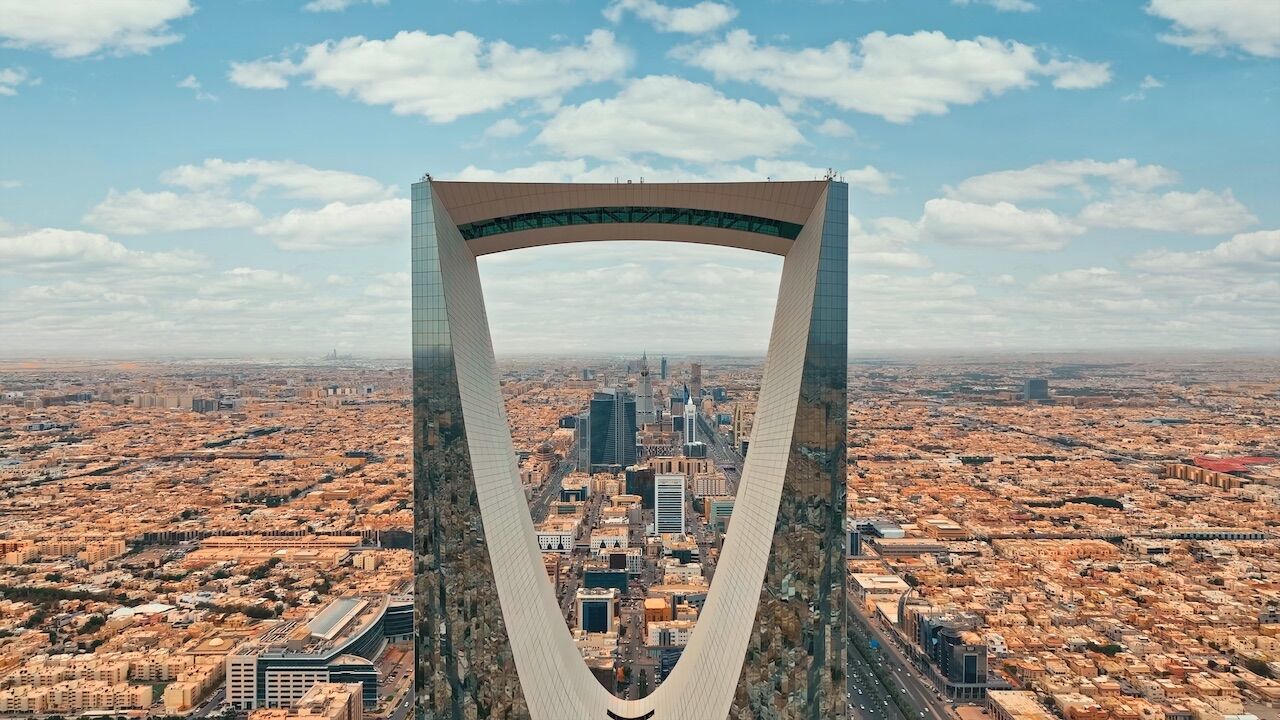
Photo: artisticArtbycreative/Shutterstock
In the heart of the country lies a city that somehow mixes traditional Najdi architecture (think mud-brick citadels) with sites like the 900-foot-tall Kingdom Centre and events including the Diriyah E-Prix racing championship. Start your capital visit at the Saudi National Museum and Al Murabba Historical Palace in the King Abdulaziz Historical Center, where you can learn about Saudi’s meteoric rise from a small settlement on the banks of Wadi Hanifa to the 93-year-old country it is today.
To witness this history in person, head to Diriyah — the birthplace of modern Saudi. Stroll through refurbished alleys and green spaces that are reminiscent of Saudi’s past. Stop by Masmak Fort to pick up some trivia about the unification of the country and authentic souvenirs at the adjacent Souq Al Zal. You can’t go wrong with an ornamental rug…if you can squeeze it into your suitcase.
For an evening of entertainment, head to the Boulevard Riyadh City and Boulevard World, part of winter’s ongoing Riyadh Season. With more than 220 acres of rides, activities, live performance stages, restaurants, and retail outlets, you’ll be spoiled for choice.
2. Asir, colorful culture in the southwestern mountains
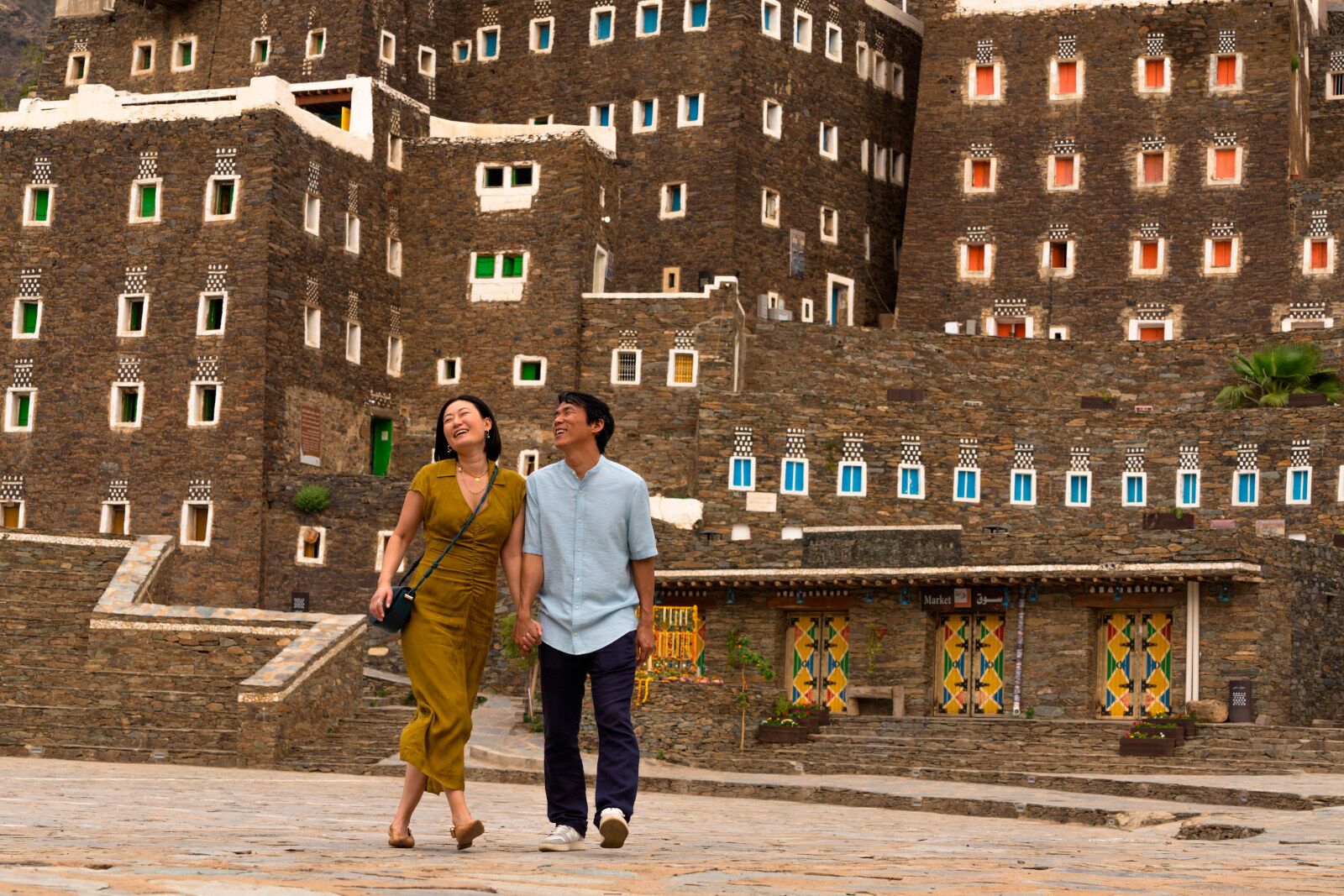
Photo: Saudi Tourism Authority
The highland province of Asir is a favorite among locals for its yearlong mild climate and lush landscapes. And those cool temps and the mountainous terrain draw all kinds of hikers and adventurers. Not to be missed is the picturesque Rijal Almaa, a 900-year-old heritage village featuring 60 stone fortresses that look like gingerbread houses. Their inner rooms are decorated with Al Qatt Al Asiri, an indigenous artform characterized by bold colors and geometric designs. This oral tradition of painting has been passed down through the ages from mothers to daughters and is now considered an intangible heritage of the country.
Walk through the village square and sample local specialties like honey or Aseeda (porridge), or blend in with the locals by donning a flower crown — the famed Flower Men of Asir wear jasmine and basil hair crowns as accessories. If you time your visit with a national holiday or festival, you can also catch Asiri folkloric dances and songs in the village square.
3. Jeddah, the coastal escape
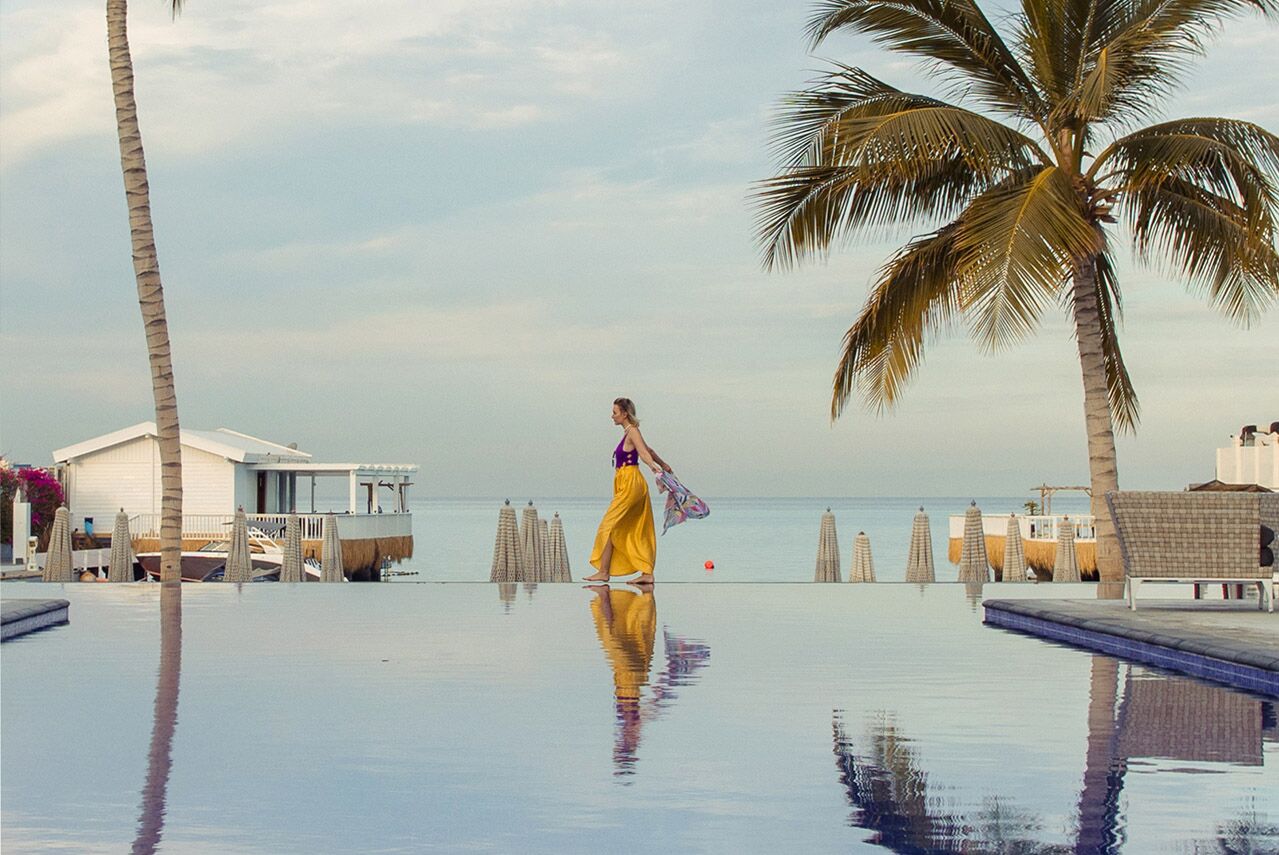
Photo: Saudi Tourism Authority
Over the centuries, the coastal city of Jeddah has seen an influx of peoples and cultures — from pilgrims passing through the port to merchants traveling a maritime trade route. Thanks to its proximity to the Red Sea, abundant marine life, and rich confluence of cultures, Jeddah goes by the moniker “Bride of the Red Sea.”
Your first stop should be Al Balad (Historic Jeddah), a UNESCO World Heritage Site with mosques and souqs that date back to the 7th century AD. During the 19th century, wealthy merchant families built coral-stone homes with intricate lattice windows that protected them from the harsh summers. Part of a major ongoing project, several of these structures have been restored and now serve as family-run museums.
Pop into Al Saidi Bakery, one of the oldest bakeries in town, to sample some freshly baked bread or Café Magad for a cup of coffee. Jeddah also has a thriving arts scene, and one of the best places to witness art come to life is at the Jeddah Corniche (aka Jeddah Waterfront), an 18-mile promenade dotted with 20 open-air sculptures. End the evening with a walk along Jeddah’s new Yacht Club and Marina, lined with luxury yachts, high-end designer stores, and restaurants.
4. AlUla, home of treasures
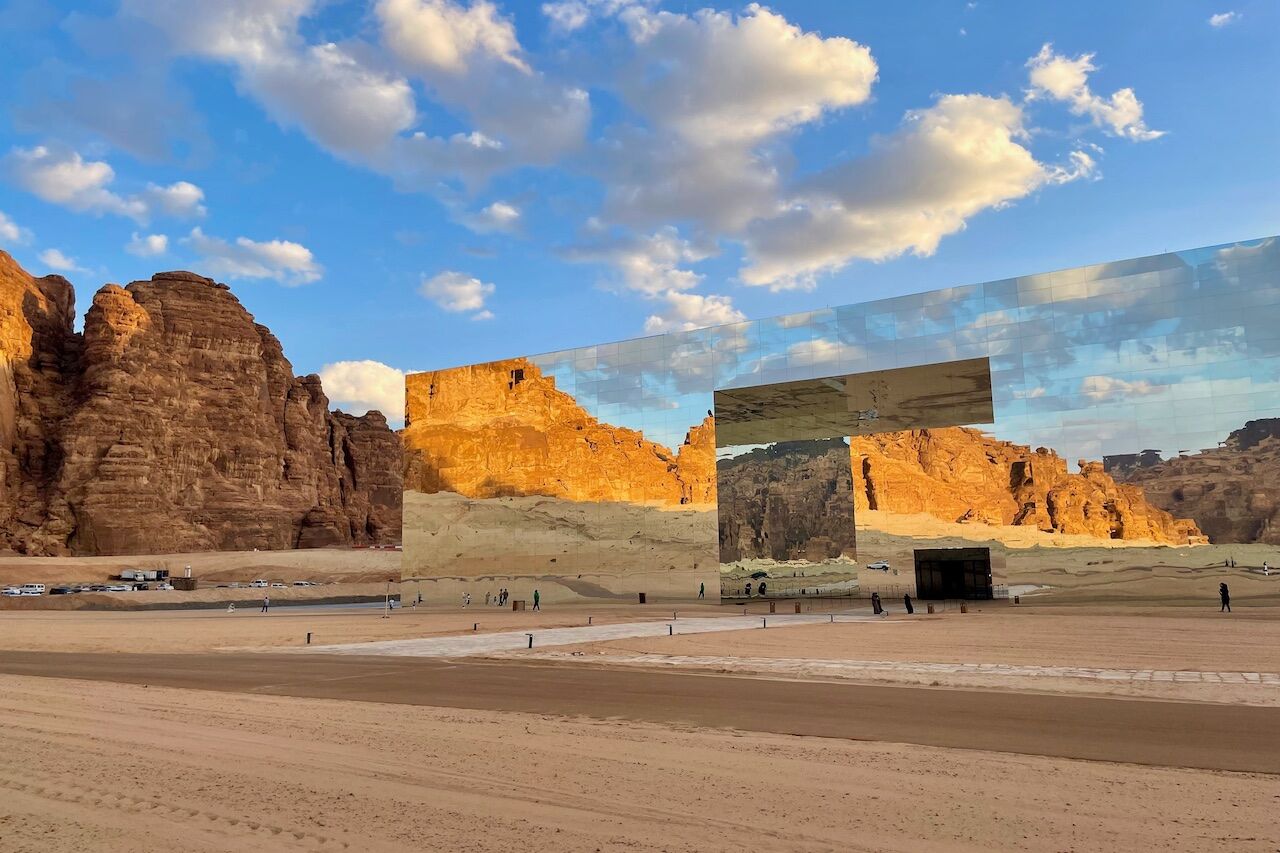
Photo: Petu/Shutterstock
With more than 100 Nabataean tombs and mysterious rock formations, AlUla is a treasure trove of history and archeology mixed with some incredible landscapes. Plan to find these answers for yourself: Does Jabal Al-Fil really look like an elephant? Do the lions carved into the façade of the Dedan Lion Tombs protect the inhabitants inside? Who were the kings who ruled over the ancient cities of Khyber and Taymah? Ask the rawis (storytellers) of AlUla and they’ll enchant you with centuries-old tales of the kingdom.
Of course, you can experience the modern side of AlUla as well. Take to the desert by mountain bike or dune buggy. And check the calendar to see if your visit overlaps with world-class performances (e.g., Alicia Keys, Andrea Bocelli, or Enrique Iglesias) at Maraya Concert Hall, the largest mirrored building in the world.
5. Al-Ahsa and the simple life
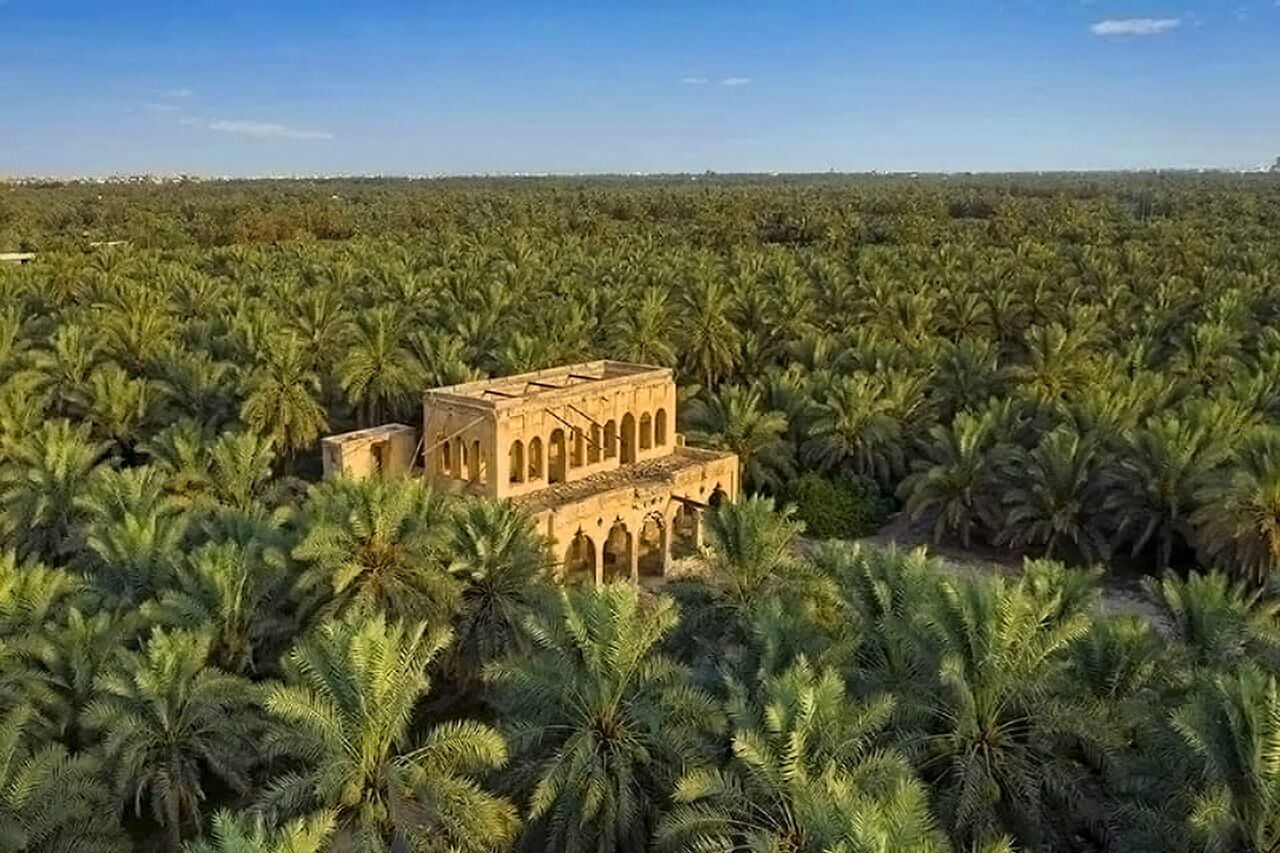
Photo: Galih Ajasih/Shutterstock
Imagine relaxing under the shade of a palm tree, and as far as your eye can see, it’s acres upon acres of greenery in the desert. That’s the world’s largest oasis for you: Al-Ahsa (or Al-Hasa), with nearly 2.5 million palm trees. And, of course, the dates produced by said palms are just as renowned — so much so that the city of Al-Ahsa hosts a longstanding annual date festival.
If you visit, make sure to leave time for a few day trips. Some 40 miles from the oasis, you’ll find the Uqair fort marking the site of the first seaport in the Arabian Gulf. The Portuguese and Ottoman influences in the fort’s architecture make for Instagram-worthy pics. And about a two-hour drive from Al-Ahsa lies Souq Al Qaisariya in Al Hofuf. The oldest souq in the Eastern Province, this traditional marketplace features more than 400 shops selling top-notch items like Bishts (men’s traditional cloaks) and dallahs (coffee pots). You just might need an extra suitcase to bring a bit of Saudi home with you — especially if you’ve already bagged that rug.

